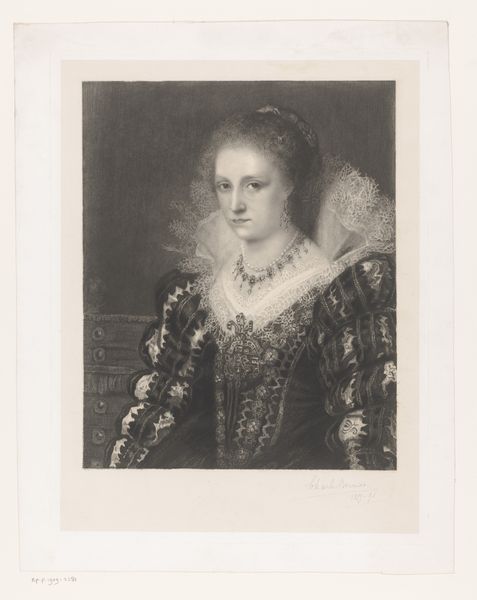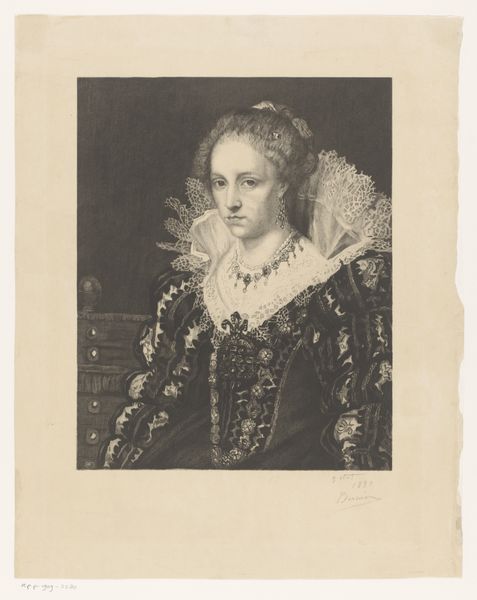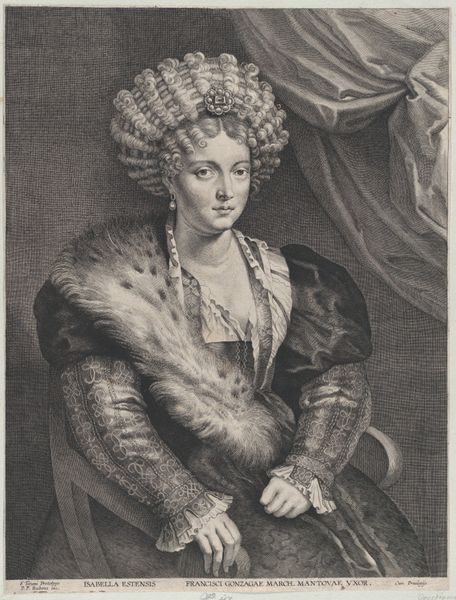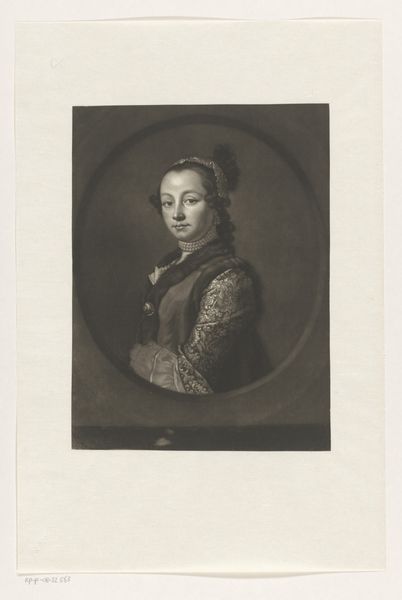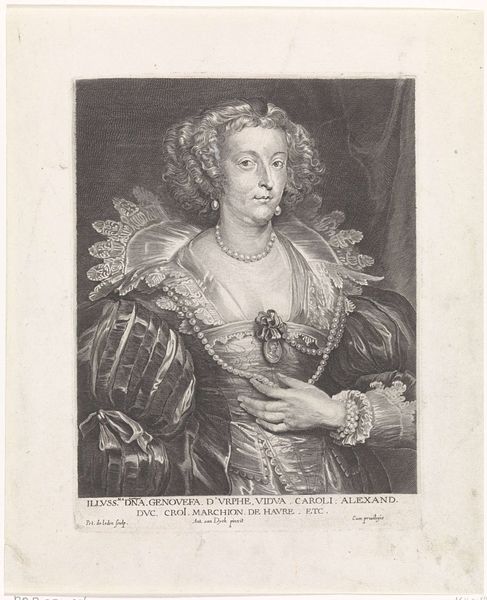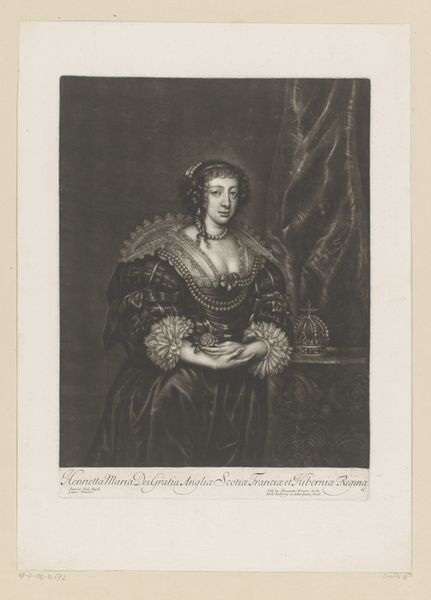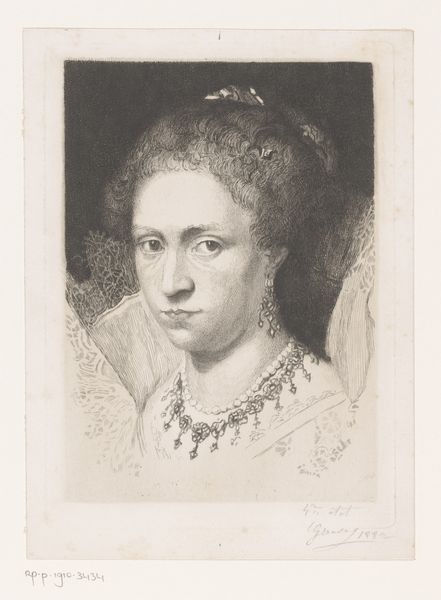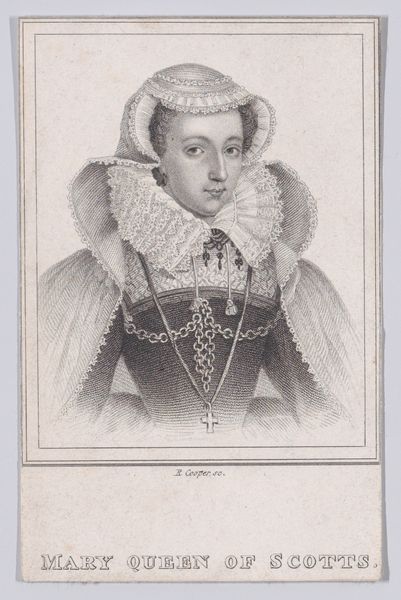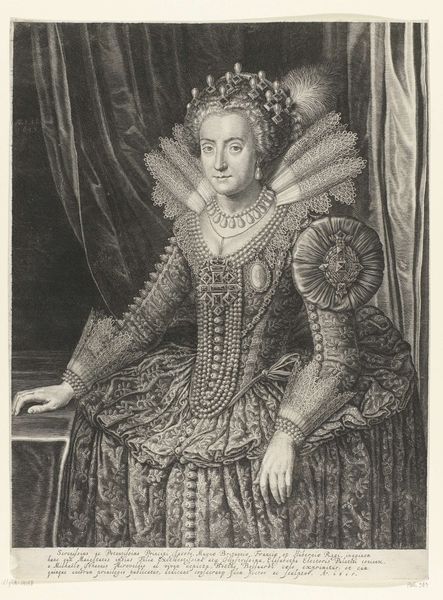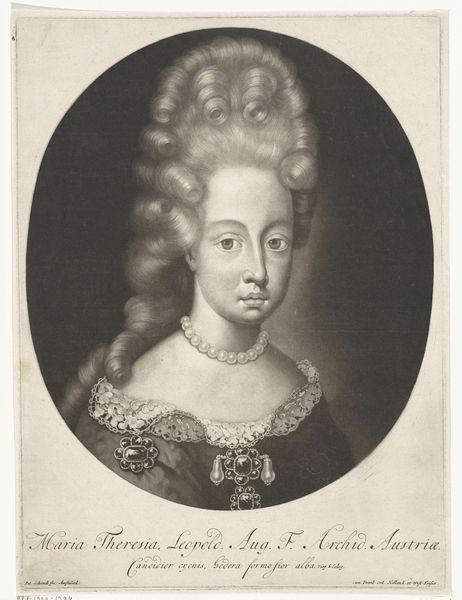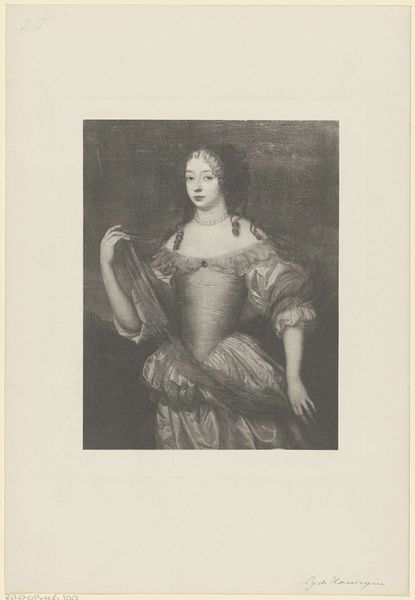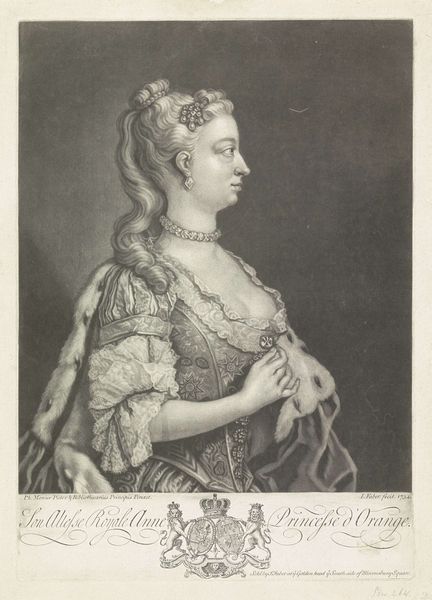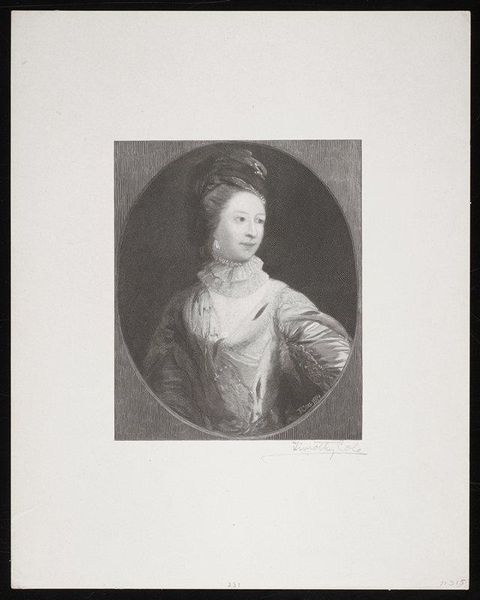
print, engraving
#
baroque
# print
#
history-painting
#
engraving
Dimensions: height 309 mm, width 238 mm
Copyright: Rijks Museum: Open Domain
Curator: Here we have a portrait of Anna van Oostenrijk, dating from 1621 to 1731. It's realized as a print. More specifically, it’s an engraving by Louis Lucas. Editor: My initial impression is one of subdued opulence. The textures of the lace and fabric are incredibly detailed for an engraving, but the monochrome palette gives it a stately reserve. Curator: Absolutely. And if we consider the context, this portrait is more than just an image. It’s a carefully constructed representation of power and status. Anna of Austria, Queen consort of France, was a pivotal figure whose lineage and marriage connected major European powers. Editor: Let's consider the process of producing engravings like this during that period. The skill required to translate such rich textures into a reproducible format speaks volumes about the engraver's labor and the intended audience—one that valued both artistry and accessibility. The choice of printing as medium speaks to the possibilities of dissemination. Curator: Precisely! Engravings allowed for wider circulation than paintings, enabling the dissemination of royal imagery and reinforcing Anna’s image across different social strata and geographical locations. How do you read that almost architectural ruff around her neck, in the context of her position in the French court? Editor: That ruff! Its intricate lace work and imposing size visually echo the labor that produced it, reflecting not only status, but also a significant investment of material resources. Its structured form gives it an almost mechanical quality – like a complex piece of wearable technology proclaiming "royalty". It stands in stark contrast to the relatively natural depiction of her face. Curator: That’s an intriguing observation! Considering the constraints placed upon women in positions of power during that era, I see it as framing device—literally circumscribing her agency while simultaneously elevating her status as a symbol of dynastic continuity. The pearls and the detailing on the dress are further emphasizers of this. Editor: And thinking about these objects as commodities, their production reflects an intricate web of labor, craft, and global trade. Each element from the pearl to the fabric signifies the economic systems supporting royal portraiture, reminding us of how seemingly simple portraits inscribe wider stories of class and production. Curator: That’s a crucial point to emphasize, it shows how the artwork functions within a wider social and political landscape. I will think differently of portraits from now on. Editor: Me too. Next time I am going to ask, how were the artworks made and by whom, as well as what this can tell us about society at the time.
Comments
No comments
Be the first to comment and join the conversation on the ultimate creative platform.
